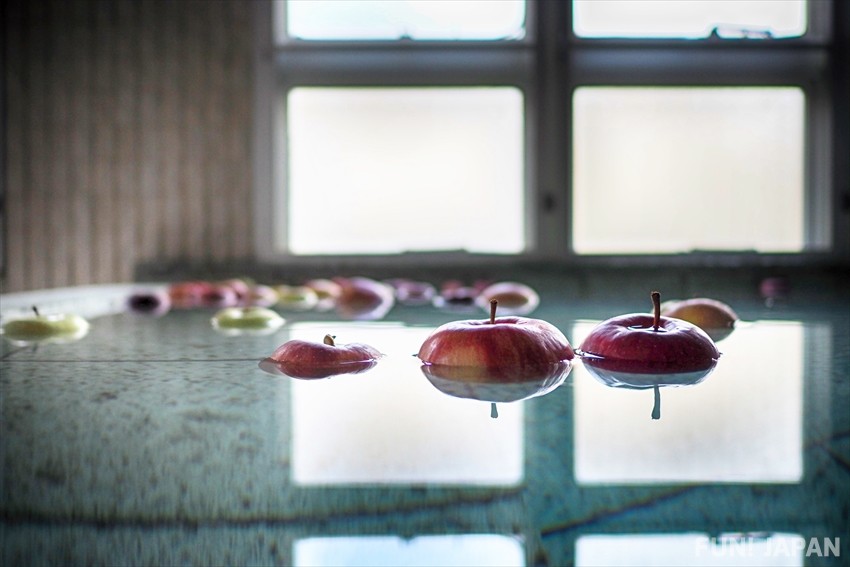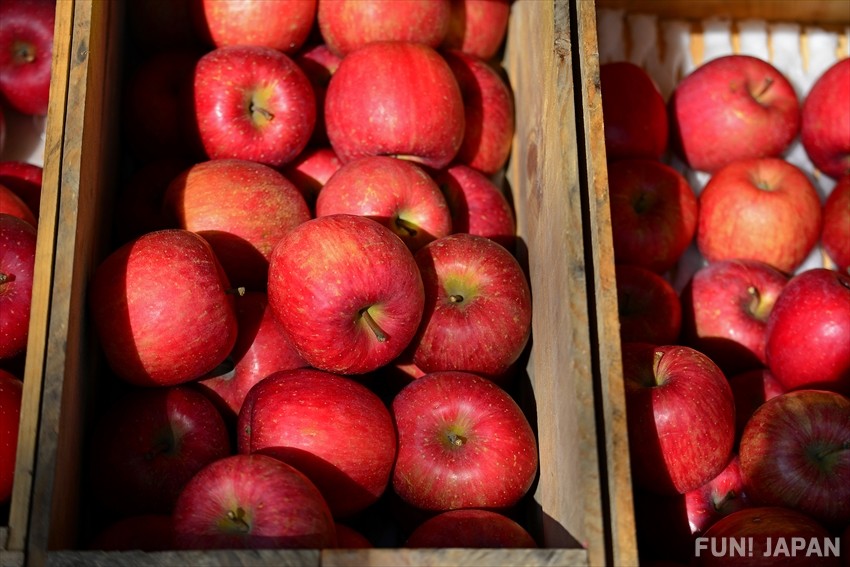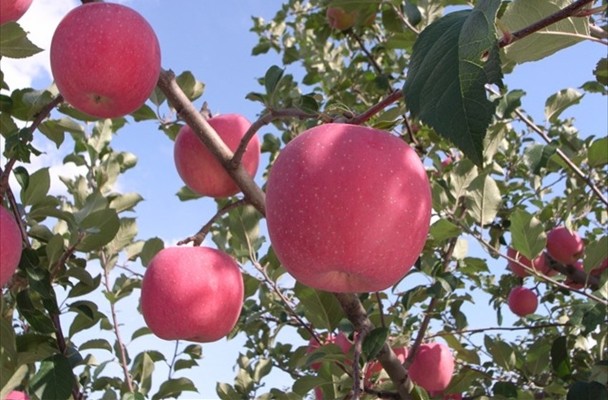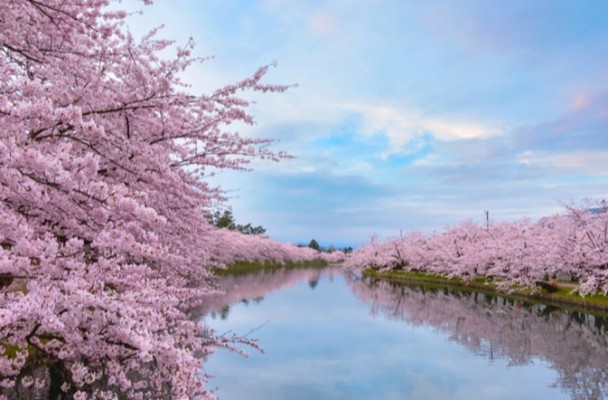
The delicious crunch of an apple is one of the simple pleasures in life, and if you’re lucky enough to be biting into an Aomori apple, it’s a pleasure you won’t soon forget. Producing over 50% of the nation’s apples, the northern prefecture is known for their sweet, crisp and beautiful apples, with over 40 varieties available. The love of apples extends beyond simply growing and eating them however, with apple pie trails, apple mascots and apple hot springs.
Why are Aomori’s Apples famous?

With harsh winters, the central region of Aomori was once written off for agriculture, with no crops able to stand the tough conditions. However, in the Meji era, apples were introduced to the Tsugaru region and it has since become the leading apple producing region of Japan. You may have noticed that Japan’s apples are often bigger than you may see at home, with most of Aomori’s weighing in at between 300g-350g each.
The Unique Conditions

The region’s unique environment creates peak apple-growing conditions. The climate is cool, with three snow-covered months of the year and drastic drops in temperature between night and day. Apples prefer colder weather and the Aomori climate is credited with giving its apples their bright red colouring. Mt. Iwaki both blocks the northwest sea wind and also produced ash soil during its many past eruptions, packing the soil with minerals for healthy growth.
The Apple-Growers

As well as where the apples grow, who picks them is considered a major part of the apple-growing tradition in Aomori. Described as serious, stubborn and protective, the apple growers have a trait known in the local dialect as ‘joppari’, which is a vital trait for those wishing to grow delicious apples. The dedication of the growers means each apple goes through ten stages before being harvested, from branch pruning to defloration, removing leaves to rotating the apples before finally picking them. A key stage is bagging, where each individual apple is placed in a paper bag, resulting in a longer life. Un-bagged apples are known as sun-varieties and are often sweeter as they get more sunlight. The entire process takes 11 months, proving the hard-working nature of Aomor’s apple growers.
Aomori’s Apple Loving Culture

As well as growing and eating copious amounts of apples Aomori celebrates the apples in many unusual ways.
Music Masters Ringomusume
Local band called Ringomusume have been performing since 2000, with each member named after one of the top apple varieties. The current members are Toki, Ourin, Jonagold and Saika and they perform catchy songs with fun dances, promoting the apples of Aomori with their outfits and lyrics.
Kuroishi’s Mascot Nyango-Star
The mascot of Aomori’s Kuroishi city is Nyango-star, a very cute apple-shaped cat who is known for drumming along to heavy metal music.
Hirosaki’s Apple Park and Apple Pies

In the city of Hirosaki, many bakeries sell delicious apple pies, with visitors often trying different versions to find their favourite using a specially-published map with over 50 bakeries. At the annual Sakura festival, a giant 2m apple pie is made and handed out to visitors to enjoy as they admire the flowers. Visitors can head to Apple Park to see over 1300 trees with 65 apple varieties, with apple harvesting tours available and an apple harvest Festival in late September with its own giant apple pie.
Apple Baths of Aomori
While some prefectures put yuzu citrus fruits in their water or oranges, in Aomori you can take a dip surrounded by apples. Claiming beautifying effects and improved circulation, the addition of apples is also relaxing, not to mention unique. Minamida Onsen Hotel in Hirakawa City is well known for their all-year-round apple baths while Kai Tsugaru in the Owani Onsen district has apple baths available in autumn.
Top Aomori Apple Varieties

There are approximately 50 varieties of apple grown in Aomori, with 40 shipped across the country. The majority have a deep red colouring, while some - like the Natsumidori, Kiou and Orin are a pale green. One popular variety - the Toki - is a golden yellow, making it an unusual favourite. There is a category of apples that are harvested earlier than most and these are known as the Wasekei Fuji, as they are related to the Fuji variety and share a similar taste.
Toki
A delicious golden variety, the Toki is a large apple, weighing up to 400g. Turning a tempting light-pink when left in the sun, it has a firm, juicy texture and a sweet, flavour, with a perfectly crisp bite. The Toki was cultivated from the Orin and Fuji varieties and is harvested in early October.
Jonagold
The Jonagold is a balance of tart and sweet, with a classic speckled red appearance. Its flavour is often considered honey-like and is good for eating fresh or for baking thanks to its tangy taste. It was cultivated using the Golden Delicious and Kougyoku (Jonathan) varieties and is harvested in mid October.
Orin
One of the sweetest varieties, the pale green Orin is a firm favourite with apple lovers. With a more oblong shape, the apple can weigh in at up to 300g, and has a soft, light textured flesh. The Orin was cultivated using Golden Delicious and Indo varieties and is harvested in mid-November.
Fuji
Making up 50% of Aomori’s apple harvests, the Fuji is a staple apple with great flavour. The variety is extremely juicy, with a balance of sweet and sharp flavours making it a great crowd-pleaser. The apples are ripe around the beginning of November with many sub-varieties of Fuji available including the Sun Fuji and the Hirosaki Fuji.
Sekai Ichi
Believed to be the most expensive apples in the world, the Sekai Ichi were originally cultivated in Morioka but now hail largely from Aomori. Known for their enormous size, they can cost around 2500 yen each and weigh in at up to 1kg. The apples are washed with honey as they grow and are a cross between Golden Delicious and Red Delicious, giving them a sweet crunch that’s worth the price tag.
Daikoei
These are an unusually large variety of apple that are grown to the size of small melons and can be up to 9cm wide, created through the selective techniques of Aomori’s expert cultivators. Crunchy, juicy and with a mild flavour, they are a popular gift and can sell for around 2,500 yen per apple thanks to their deep red colouring.
Tsugaru
The Tsugaru variety is a very sweet and juicy variety with a pleasingly crisp bite. The striped red colouring and oval shape make it a pleasing natural-looking apple and it is around 300g on average. It was cultivated using the Golden Delicious and Kougyou varieties and is an early variety, harvested around mid September.



Comments